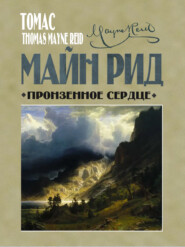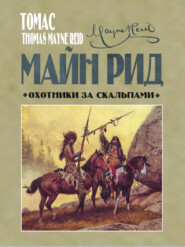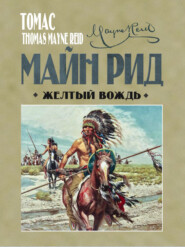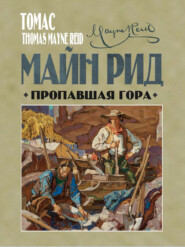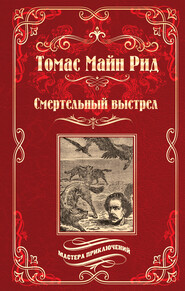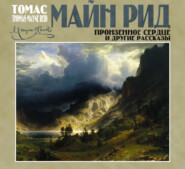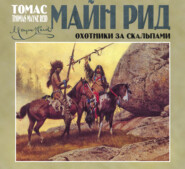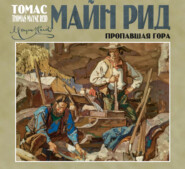По всем вопросам обращайтесь на: info@litportal.ru
(©) 2003-2024.
✖
Odd People: Being a Popular Description of Singular Races of Man
Настройки чтения
Размер шрифта
Высота строк
Поля
Various explanations have been offered to account for this singular phenomenon, but none seem to explain it in a satisfactory manner. It appears to be produced by the exhalations that arise from an extensive marshy tract lying around the mouth of the river Zulia, and above which it universally shows itself. The atmosphere in this quarter is usually hotter than elsewhere, and supposed to be highly charged with electricity; but whatever may be the chemical process which produces the illumination, it acts in a perfectly silent manner. No one has ever observed any explosion to proceed from it, or the slightest sound connected with its occurrence.
Of all the ideas suggested by the mention of Lake Maracaibo, perhaps none are so interesting as those that relate to its native inhabitants, whose peculiar habits and modes of life not only astonished the early navigators, but eventually gave its name to the lake itself and to the extensive province in which it is situated. When the Spanish discoverers, sailing around the shores of the gulf, arrived near the entrance of Lake Maracaibo, they saw, to their amazement, not only single houses, but whole villages, apparently floating upon the water! On approaching nearer, they perceived that these houses were raised some feet above the surface, and supported by posts or piles driven into the mud at the bottom. The idea of Venice – that city built upon the sea, to which they had been long accustomed – was suggested by these superaqueous habitations; and the name of Venezuela (Little Venice) was at once bestowed upon the coast, and afterwards applied to the whole province now known as the Republic of Venezuela.
Though the “water villages” then observed have long since disappeared, many others of a similar kind were afterwards discovered in Lake Maracaibo itself, some of which are in existence to the present day. Besides here and there an isolated habitation, situated in some bay or “laguna,” there are four principal villages upon this plan still in existence, each containing from fifty to a hundred habitations. The inhabitants of some of these villages have been “Christianised,” that is, have submitted to the teaching of the Spanish missionaries; and one in particular is distinguished by having its little church – a regular water church – in the centre, built upon piles, just as the rest of the houses are, and only differing from the common dwellings in being larger and of a somewhat more pretentious style. From the belfry of this curious ecclesiastical edifice a brazen bell may be heard at morn and eve tolling the “oracion” and “vespers,” and declaring over the wide waters of the lake that the authority of the Spanish monk has replaced the power of the cazique among the Indians of the Lake Maracaibo. Not to all sides of the lake, however, has the cross extended its conquest. Along its western shore roams the fierce unconquered Goajiro, who, a true warrior, still maintains his independence; and even encroaches upon the usurped possessions both of monk and “militario.”
The water-dweller, however, although of kindred race with the Goajiro, is very different, both in his disposition and habits of life. He is altogether a man of peace, and might almost be termed a civilised being, – that is, he follows a regular industrial calling, by which he subsists. This is the calling of a fisherman, and in no part of the world could he follow it with more certainty of success, since the waters which surround his dwelling literally swarm with fish.
Lake Maracaibo has been long noted as the resort of numerous and valuable species of the finny tribe, in the capture of which the Indian fisherman finds ample occupation. He is betimes a fowler, – as we shall presently see, – and he also sometimes indulges, though more rarely, in the chase, finding game in the thick forests or on the green savannas that surround the lake, or border the banks of the numerous “riachos” (streams) running into it. On the savanna roams the graceful roebuck and the “venado,” or South-American deer, while along the river banks stray the capibara and the stout tapir, undisturbed save by their fierce feline enemies, the puma and spotted jaguar.
But hunting excursions are not a habit of the water Indian, whose calling, as already observed, is essentially that of a fisherman and “fowler,” and whose subsistence is mainly derived from two kinds of water-dwellers, like himself – one with fins, living below the surface, and denominated fish; another with wings, usually resting on the surface, and known as fowl. These two creatures, of very different kinds and of many different species, form the staple and daily food of the Indian of Maracaibo.
In an account of his habits we stall begin by giving a description of the mode in which he constructs his singular dwelling.
Like other builders he begins by selecting the site. This must be a place where the water is of no great depth; and the farther from the shore he can find a shallow spot the better for his purpose, for he has a good reason for desiring to get to a distance from the shore, as we shall presently see. Sometimes a sort of subaqueous island, or elevated sandbank, is found, which gives him the very site he is in search of. Having pitched upon the spot, his next care is to procure a certain number of tree-trunks of the proper length and thickness to make “piles.” Not every kind of timber will serve for this purpose, for there are not many sorts that would long resist decay and the wear and tear of the water insects, with which the lake abounds. Moreover, the building of one of these aquatic houses, although it be only a rude hut, is a work of time and labour, and it is desirable therefore to make it as permanent as possible. For this reason great care is taken in the selection of the timber for the “piles.”
But it so chances that the forests around the lake furnish the very thing itself, in the wood of a tree known to the Spanish inhabitants as the “vera,” of “palo sano,” and to the natives as “guaiac.” It is one of the zygophyls of the genus Guaiacum, of which there are many species, called by the names of “iron-wood” or “lignum-vitae;” but the species in question is the tree lignum-vitae (Guaiacum arboreum), which attains to a height of 100 feet, with a fine umbrella-shaped head, and bright orange flowers. Its wood is so hard, that it will turn the edge of an axe, and the natives believe that if it be buried for a sufficient length of time under the earth it will turn to iron! Though this belief is not literally true, as regards the iron, it is not so much of an exaggeration as might be supposed. The “palo de fierro,” when buried in the soil of Maracaibo or immersed in the waters of the lake, in reality does undergo a somewhat similar metamorphose; in other words, it turns into stone; and the petrified trunks of this wood are frequently met with along the shores of the lake. What is still more singular – the piles of the water-houses often become petrified, so that the dwelling no longer rests upon wooden posts, but upon real columns of stone!
Knowing all this by experience, the Indian selects the guaiac for his uprights, cuts them of the proper length; and then, launching them in the water, transports them to the site of his dwelling, and fixes them in their places.
Upon this a platform is erected, out of split boards of some less ponderous timber, usually the “ceiba,” or “silk-cotton tree” (Bombax ceiba), or the “cedro negro” (Cedrela odorata) of the order Meliaceae. Both kinds grow in abundance upon the shores of the lake, – and the huge trunks of the former are also used by the water Indian for the constructing of his canoe.
The platform, or floor, being thus established, about two or three feet above the surface of the water, it then only remains to erect, the walls and cover them over with a roof. The former are made of the slightest materials, – light saplings or bamboo poles, – usually left open at the interstices. There is no winter or cold weather here, – why should the walls be thick? There are heavy rains, however, at certain seasons of the year, and these require to be guarded against; but this is not a difficult matter, since the broad leaves of the “enea” and “vihai” (a species of Heliconia) serve the purpose of a roof just as well as tiles, slates, or shingles. Nature in these parts is bountiful, and provides her human creatures with a spontaneous supply of every want. Even ropes and cords she furnishes, for binding the beams, joists, and rafters together, and holding on the thatch against the most furious assaults of the wind. The numerous species of creeping and twining plants (“llianas” or “sipos”) serve admirably for this purpose. They are applied in their green state, and when contracted by exsiccation draw the timbers as closely together as if held by spikes of iron. In this manner and of such materials does the water Indian build his house.
Why he inhabits such a singular dwelling is a question that requires to be answered. With the terra firma close at hand, and equally convenient for all purposes of his calling, why does he not build his hut there? So much easier too of access would it be, for he could then approach it either by land or by water; whereas, in its present situation, he can neither go away from his house or get back to it without the aid of his “periagua” (canoe). Moreover, by building on the beach, or by the edge of the woods, he would spare himself the labour of transporting those heavy piles and setting them in their places, – a work, as already stated, of no ordinary magnitude. Is it for personal security against human enemies, – for this sometimes drives a people to seek singular situations for their homes? No; the Indian of Maracaibo has his human foes, like all other people; but it is none of these that have forced him to adopt this strange custom. Other enemies? wild beasts? the dreaded jaguar, perhaps? No, nothing of this kind. And yet it is in reality a living creature that drives him to this resource, – that has forced him to flee from the mainland and take to the water for security against its attack, – a creature of such small dimensions, and apparently so contemptible in its strength, that you will no doubt smile at the idea of its putting a strong man to flight, – a little insect exactly the size of an English gnat, and no bigger, but so formidable by means of its poisonous bite, and its myriads of numbers, as to render many parts of the shores of Lake Maracaibo quite uninhabitable. You guess, no doubt, the insect to which I allude? You cannot fail to recognise it as the mosquito? Just so; it is the mosquito I mean, and in no part of South America do these insects abound in greater numbers, and nowhere are they more bloodthirsty than upon the borders of this great fresh-water sea. Not only one species of mosquito, but all the varieties known as “jejens,” “zancudos,” and “tempraneros,” here abound in countless multitudes, – each kind making its appearance at a particular hour of the day or night, – “mounting guard” (as the persecuted natives say of them) in turn, and allowing only short intervals of respite from their bitter attacks.
Now, it so happens, that although the various kinds of mosquitoes are peculiarly the productions of a marshy or watery region, – and rarely found where the soil is high and dry, – yet as rarely do they extend their excursions to a distance from the land. They delight to dwell under the shadow of leaves, or near the herbage of grass, plants, or trees, among which they were hatched. They do not stray far from the shore, and only when the breeze carries them do they fly out over the open water. Need I say more? You have now the explanation why the Indians of Maracaibo build their dwellings upon the water. It is simply to escape from the “plaga de moscas” (the pest of the flies).
Like most other Indians of tropical America, and some even of colder latitudes, those of Maracaibo go naked, wearing only the guayueo, or “waist-belt.” Those of them, however, who have submitted to the authority of the monks, have adopted a somewhat more modest garb, – consisting of a small apron of cotton or palm fibre, suspended from the waist, and reaching down to their knees.
We have already stated, that the water-dwelling Indian is a fisherman, and that the waters of the lake supply him with numerous kinds of fish of excellent quality. An account of these, with the method employed in capturing them, may not prove uninteresting.
First, there is the fish known as “liza,” a species of skate. It is of a brilliant silvery hue, with bluish corruscations. It is a small fish, being only about a foot in length, but is excellent to eat, and when preserved by drying, forms an article of commerce with the West-Indian islands. Along the coasts of Cumana and Magarita, there are many people employed in the pesca de liza (skate-fishery); but although the liza is in reality a sea fish, it abounds in the fresh waters of Maracaibo, and is there also an object of industrial pursuit. It is usually captured by seines, made out of the fibres of the cocui aloe (agave cocuiza), or of cords obtained from the unexpanded leaflets of the moriche palm (Mauritia flexuosa), both of which useful vegetable products are indigenous to this region. The roe of the liza, when dried in the sun, is an article in high estimation, and finds its way into the channels of commerce.
A still more delicate fish is the “pargo.” It is of a white colour tinged with rose; and of these great numbers are also captured. So, too, with the “doncella,” one of the most beautiful species, as its pretty name of “doncella” (young maiden) would indicate. These last are so abundant in some parts of the lake, that one of its bays is distinguished by the name of Laguna de Doncella.
A large, ugly fish, called the “vagre,” with an enormous head and wide mouth, from each side of which stretches a beard-like appendage, is also an object of the Indian’s pursuit. It is usually struck with a spear, or killed by arrows, when it shows itself near the surface of the water. Another monstrous creature, of nearly circular shape, and full three feet in diameter, is the “carite,” which is harpooned in a similar fashion.
Besides these there is the “viegita,” or “old-woman fish,” which itself feeds upon lesser creatures of the finny tribe, and especially upon the smaller species of shell-fish. It has obtained its odd appellation from a singular noise which it gives forth, and which resembles the voice of an old woman debilitated with extreme age.
The “dorado,” or gilded fish – so called on account of its beautiful colour – is taken by a hook, with no other bait attached than a piece of white rag. This, however, must be kept constantly in motion, and the bait is played by simply paddling the canoe over the surface of the lake, until the dorado, attracted by the white meteor, follows in its track, and eventually hooks itself.
Many other species of fish are taken by the water-Indians, as the “lebranche” which goes in large “schools,” and makes its breeding-place in the lagunas and up the rivers, and the “guabina,” with several kinds of sardines that find their way into the tin boxes of Europe; for the Maracaibo fisherman is not contented with an exclusive fish diet. He likes a little “casava,” or maize-bread, along with it; besides, he has a few other wants to satisfy, and the means he readily obtains in exchange for the surplus produce of his nets, harpoons, and arrows.
We have already stated that he is a fowler. At certain seasons of the year this is essentially his occupation. The fowling season with him is the period of northern winter, when the migratory aquatic birds come down from the boreal regions of Prince Rupert’s Land to disport their bodies in the more agreeable waters of Lake Maracaibo. There they assemble in large flocks, darkening the air with their myriads of numbers, now fluttering over the lake, or, at other times, seated on its surface silent and motionless. Notwithstanding their great numbers, however, they are too shy to be approached near enough for the “carry” of an Indian arrow, or a gun either; and were it not for a very cunning stratagem which the Indian has adopted for their capture, they might return again to their northern haunts without being minus an individual of their “count.”
But they are not permitted to depart thus unscathed. During their sojourn within the limits of Lake Maracaibo their legions get considerably thinned, and thousands of them that settle down upon its inviting waters are destined never more to take wing.
To effect their capture, the Indian fowler, as already stated, makes use of a very ingenious stratagem. Something similar is described as being practised in other parts of the world; but in no place is it carried to such perfection as upon the Lake Maracaibo.
The fowler first provides himself with a number of large gourd-shells of roundish form, and each of them at least as big as his own skull. These he can easily obtain, either from the herbaceous squash (Cucurbita lagenaris) or from the calabash tree (Crescentia cujete), both of which grow luxuriantly on the shores of the lake. Filling his periagua with these, he proceeds out into the open water to a certain distance from the land, or from his own dwelling. The distance is regulated by several considerations. He must reach a place which, at all hours of the day, the ducks and other waterfowl are not afraid to frequent; and, on the other hand, he must not go beyond such a depth as will bring the water higher than his own chin when wading through it. This last consideration is not of so much importance, for the water Indian can swim almost as well as a duck, and dive like one, if need be; but it is connected with another matter of greater importance – the convenience of having the birds as near as possible, to save him a too long and wearisome “wade.” It is necessary to have them so near, that at all hours they may be under his eye.
Having found the proper situation, which the vast extent of shoal water (already mentioned) enables him to do, he proceeds to carry out his design by dropping a gourd here and another there, until a large space of surface is covered by these floating shells. Each gourd has a stone attached to it by means of a string, which, resting upon the bottom, brings the buoy to an anchor, and prevents it from being drifted into the deeper water or carried entirely away.
When his decoys are all placed, the Indian paddles back to his platform dwelling, and there, with watchful eye, awaits the issue. The birds are at first shy of these round yellow objects intruded upon their domain; but, as the hours pass, and they perceive no harm in them, they at length take courage and venture to approach. Urged by that curiosity which is instinctive in every creature, they gradually draw nigher and nigher, until at length they boldly venture into the midst of the odd objects and examine them minutely. Though puzzled to make out what it is all meant for, they can perceive no harm in the yellow globe-shaped things that only bob about, but make no attempt to do them any injury. Thus satisfied, their curiosity soon wears off, and the birds no longer regarding the floating shells as objects of suspicion, swim freely about through their midst, or sit quietly on the water side by side with them.
But the crisis has now arrived when it is necessary the Indian should act, and for this he speedily equips himself. He first ties a stout rope around his waist, to which are attached many short strings or cords. He then draws over his head a large gourd-shell, which, fitting pretty tightly, covers his whole skull, reaching down to his neck. This shell is exactly similar to the others already floating on the water, with the exception of having three holes on one side of it, two on the same level with the Indian’s eyes, and the third opposite his mouth, intended to serve him for a breathing-hole.
He is now ready for work; and, thus oddly accoutred, he slips quietly down from his platform, and laying himself along the water, swims gently in the direction of the ducks.
He swims only where the water is too shallow to prevent him from crouching below the surface; for were he to stand upright, and wade, – even though he were still distant from them, – the shy birds might have suspicions about his after-approaches.
When he reaches a point where the lake is sufficiently deep, he gets upon his feet and wades, still keeping his shoulders below the surface. He makes his advance very slowly and warily, scarce raising a ripple on the surface of the placid lake, and the nearer he gets to his intended victims he proceeds with the greater caution.
The unsuspecting birds see the destroyer approach without having the slightest misgiving of danger. They fancy that the new comer is only another of those inanimate objects by their side – another gourd-shell drifting out upon the water to join its companions. They have no suspicion that this wooden counterfeit – like the horse of Troy – is inhabited by a terrible enemy.
Poor things! how could they? A stratagem so well contrived would deceive more rational intellects than theirs; and, in fact, having no idea of danger, they perhaps do not trouble themselves even to notice the new arrival.
Meanwhile the gourd has drifted silently into their midst, and is seen approaching the odd individuals, first one and afterwards another, as if it had some special business with each. This business appears to be of a very mysterious character; and in each case is abruptly brought to a conclusion, by the duck making a sudden dive under the water, – not head foremost, according to its usual practice, but in the reverse way, as if jerked down by the feet, and so rapidly that the creature has not time to utter a single “quack.”
After quite a number of individuals have disappeared in this mysterious manner, the others sometimes grow suspicious of the moving calabash, and either take to wing, or swim off to a less dangerous neighbourhood; but if the gourd performs its office in a skilful manner, it will be seen passing several times to and fro between the birds and the water village before this event takes place. On each return trip, when far from the flock, and near the habitations, it will be seen to rise high above the surface of the water. It will then be perceived that it covers the skull of a copper-coloured savage, around whose hips may be observed a double tier of dead ducks dangling by their necks from the rope upon his waist, and forming a sort of plumed skirt, the weight of which almost drags its wearer back into the water.
Of course a capture is followed by a feast; and during the fowling season of the year the Maracaibo Indian enjoys roast-duck at discretion. He does not trouble his head much about the green peas, nor is he particular to have his ducks stuffed with sage and onions; but a hot seasoning of red pepper is one of the indispensible ingredients of the South-American cuisine; and this he usually obtains from a small patch of capsicum which he cultivates upon the adjacent shore; or, if he be not possessed of land, he procures it by barter, exchanging his fowls or fish for that and a little maize or manioc flour, furnished by the coast-traders.
The Maracaibo Indian is not a stranger to commerce. He has been “Christianised,” – to use the phraseology of his priestly proselytiser, – and this has introduced him to new wants and necessities. Expenses that in his former pagan state were entirely unknown to him, have now become necessary, and a commercial effort is required to meet them. The Church must have its dues. Such luxuries as being baptised, married, and buried, are not to be had without expense, and the padre takes good care that none of these shall be had for nothing. He has taught his proselyte to believe that unless all these rites have been officially performed there is pot the slightest chance for him in the next world; and under the influence of this delusion, the simple savage willingly yields up his tenth, his fifth, or, perhaps it would be more correct to say, his all. Between fees of baptism and burial, mulcts for performance of the marriage rite, contributions towards the shows and ceremonies of dias de fiesta, extravagant prices for blessed beads, leaden crucifixes, and images of patron saints, the poor Christianised Indian is compelled to part with nearly the whole of his humble gains; and the fear of not being able to pay for Christian burial after death, is often one of the torments of his life.
To satisfy the numerous demands of the Church, therefore, he is forced into a little action in the commercial line. With the water-dweller of Maracaibo, fish forms one of the staples of export trade, – of course in the preserved state, as he is too distant from any great town or metropolis to be able to make market of them while fresh. He understands, however, the mode of curing them, – which he accomplishes by sun-drying and smoking, – and, thus prepared, they are taken off his hands by the trader, who carries them all over the West Indies, where, with boiled rice, they form the staple food of thousands of the dark-skinned children of Ethiopia.
The Maracaibo Indian, however, has still another resource, which occasionally supplies him with an article of commercial export. His country – that is, the adjacent shores of the lake – produces the finest caoutchouc. There the India-rubber tree, of more than one species, flourishes in abundance; and the true “seringa,” that yields the finest and most valuable kind of this gummy juice, is nowhere found in greater perfection than in the forests of Maracaibo. The caoutchouc of commerce is obtained from many other parts of America, as well as from other tropical countries; but as many of the bottles and shoes so well-known in the india-rubber shops, are manufactured by the Indians of Maracaibo, we may not find a more appropriate place to give an account of this singular production, and the mode by which it is prepared for the purposes of commerce and manufacture.
As already mentioned, many species of trees yield india-rubber, most of them belonging either to the order of the “Morads,” or Euphorbiaceae. Some are species of ficus, but both the genera and species are too numerous to be given here. That which supplies the “bottle india-rubber” is a euphorbiaceous plant, – the seringa above mentioned, – whose proper botanical appellation is Siphonia elastica. It is a tall, straight, smooth-barked tree, having a trunk of about a foot in diameter, though in favourable situations reaching to much larger dimensions. The process of extracting its sap – out of which the caoutchouc is manufactured – bears some resemblance to the tapping of sugar-maples in the forests of the north.
With his small hatchet, or tomahawk, the Indian cuts a gash in the bark, and inserts into it a little wedge of wood to keep the sides apart. Just under the gash, he fixes a small cup-shaped vessel of clay, the clay being still in a plastic state, so that it may be attached closely to the bark. Into this vessel the milk-like sap of the seringa soon commences to run, and keeps on until it has yielded about the fifth of a pint. This, however, is not the whole yield of a tree, but only of a single wound; and it is usual to open a great many gashes, or “taps,” upon the same trunk, each being furnished with its own cup or receiver. In from four to six hours the sap ceases to run.
The cups are then detached from the tree, and the contents of all, poured into a large earthen vessel, are carried to the place where the process of making the caoutchouc is to take place, – usually some dry open spot in the middle of the forest, where a temporary camp has been formed for the purpose.
When the dwelling of the Indian is at a distance from where the india-rubber tree grows, – as is the case with those of Lake Maracaibo, – it will not do to transport the sap thither. There must be no delay after the cups are filled, and the process of manufacture must proceed at once, or as soon as the milky juice begins to coagulate, – which it does almost on the instant.
Previous to reaching his camp, the “seringero” has provided a large quantity of palm-nuts, with which he intends to make a fire for smoking the caoutchouc. These nuts are the fruit of several kinds of palms, but the best are those afforded by two magnificent species, – the “Inaja” (Maximiliana regia), and the “Urucuri” (Attalea excelsa).
A fire is kindled of these nuts; and an earthen pot, with a hole in the bottom, is placed mouth downward over the pile. Through the aperture now rises a strong pungent smoke.
If it is a shoe that is intended to be made, a clay last is already prepared, with a stick standing out of the top of it, to serve as a handle, while the operation is going on. Taking the stick in his hand, the seringero dips the last lightly into the milk, or with a cup pours the fluid gently over it, so as to give a regular coating to the whole surface; and then, holding it over the smoke, he keeps turning it, jack-fashion, till the fluid has become dry and adhesive. Another dip is then given, and the smoking done as before; and this goes on, till forty or fifty different coats have brought the sides and soles of the shoe to a proper thickness. The soles, requiring greater weight, are, of course, oftener dipped than the “upper leather.”
The whole process of making the shoe does not occupy half an hour; but it has afterwards to receive some farther attention in the way of ornament; the lines and figures are yet to be executed, and this is done about two days after the smoking process. They are simply traced out with a piece of smooth wire, or oftener with the spine obtained from some tree, – as the thorny point of the bromelia leaf.
In about a week the shoes are ready to be taken from the last; and this is accomplished at the expense and utter ruin of the latter, which is broken into fragments, and then cleaned out. Water is used sometimes to soften the last, and the inner surface of the shoe is washed after the clay has been taken out.
Bottles are made precisely in the same manner, – a round ball, or other shaped mass of clay, serving as the mould for their construction. It requires a little more trouble to get the mould extracted from the narrow neck of the bottle.







